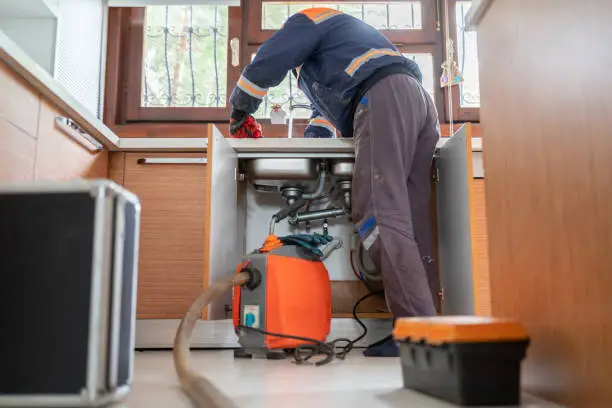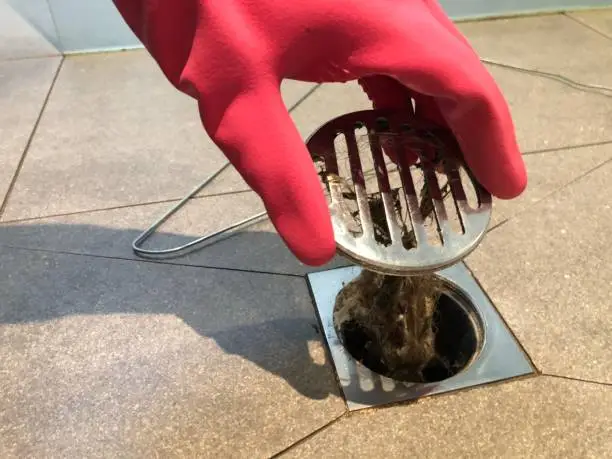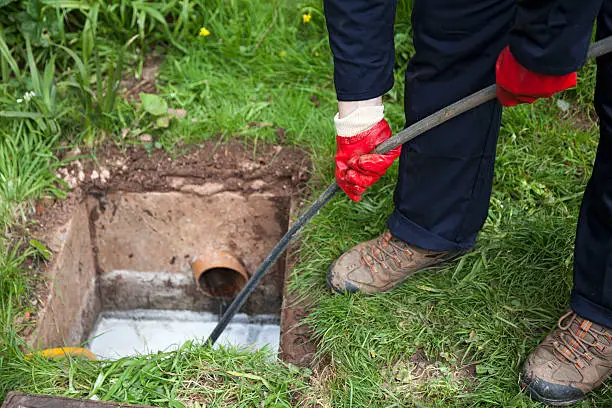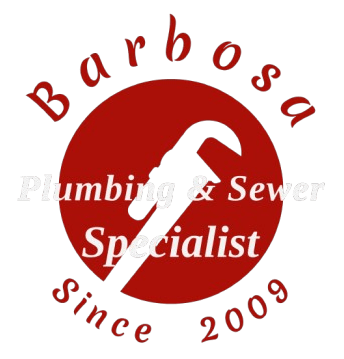Dealing with a clogged drain can be very frustrating. Although a DIY drain cleaning approach may look appealing at first, you may also be prone to errors that may cause more harm than good. Tactics to misapply or use the wrong products in an attempt to clear a clog may not cause a long-term blockage, but they may be damaging the pipework, which in the long run can cost you a lot of money to repair! By knowing what the most common DIY habits are that lead to drain cleaning blunders and misapplying wrong tactics, you can keep the pipes in your home healthy and the systems running in your home as they should.
Common DIY Drain Cleaning Mistakes: 6 Ways to Ruin Your Pipes
At Barbosa Plumbing & Sewer, we emphasize the importance of proper drain cleaning. From using the right tools to preventing buildup, learning essential care steps now can spare you costly repairs and help maintain healthy pipes for years to come.

Restrain yourself from these 6 DIY drain cleaning mistakes:
- Mistake #1: Using Chemical Drain Cleaners
Pouring harsh cleaners that contain sulfuric acid, lye, or other harsh chemicals.
- Damage:
Corrosive chemicals can cause leaks in plastic pipes and damage pipes, particularly older ones made of cast iron or galvanized steel. The cleaner will continue to cause corrosion if it becomes stuck.
- Solution:
For small blockages, use a mixture of baking soda and vinegar, followed by warm water.
For larger blockages, use an enzymatic cleaner that uses natural bacteria to break down organic waste.
- Mistake #2: Pushing with too much force
Using excessive force with a plunger or drain snake to clear a tough clog.
- Damage:
Aggressive plunging during drain cleaning can cause damage to rubber seals, loosen joints, puncture or scratch pipes, leading to corrosion or leaks, and potentially cracking fragile fixtures.
- Solution:
To clear a drain clog, plunge with steady pressure, tighten the seal, and try a different method if necessary. Gently feed the cable and avoid force if resistance occurs.

- Mistake #3: Using boiling water on the wrong pipes
Pouring boiling water down the drain to melt a greasy clog.
- Damage:
Hot tap water can melt or warp PVC pipes, soften joints, and re-solidify into harder blockages if the blockage is too large for the water to melt completely.
- Solution:
To fix minor grease blockages during drain cleaning, use hot tap water and dish soap, while for serious clogs, a professional with hydro-jetting equipment may be needed.
- Mistake #4: Ignoring the root cause of repeated clogs
Only treating a recurrent blockage with a DIY approach rather than determining why it continues to recur.
- Damage:
This blockage may be a larger problem, such as tree roots, a collapsed pipe, or mineral buildup, so treating recurrent symptoms with temporary fixes will ultimately lead to repairs and backup of bigger costs down the road.
- Solution:
If you are experiencing multiple or habitual drain blockages, you should seek the help of a professional who is able to obtain a better understanding of what is causing the issue through camera inspection and give you proper recommendations.
- Mistake #5: Using a wire coat hanger
Trying to clear a drain clog by using a coat hanger wire, straightening it, and pushing it down the drain.
- Damage:
During drain cleaning, the inside of the pipe can be easily scratched by the rigid, sharp end of a coat hanger, resulting in corrosion and irreparable damage. Additionally, the hanger may become lodged in the drain, greatly exacerbating the issue.
- Solution:
To clear clogs without breaking porcelain, use a toilet auger and a drain snake or auger to manoeuvre pipes.

- Mistake #6: Not addressing hair and soap scum buildup
Allowing hair, soap scum, and other organic matter to accumulate in shower and bathtub drains over time.
- Damage:
This sticky, gunky mixture is one of the most common causes of clogs and can be incredibly stubborn to remove once established.
- Solution:
To improve drain cleaning and prevent hair clogs, install a drain screen or hair catcher. You can also regularly pour a mixture of baking soda and vinegar down the drain to help break down the buildup before it causes a major blockage.
Conclusion
Keeping drains functioning properly, healthy, and unclogged means more than simply addressing a clog. You can avoid some costly plumbing repairs by steering clear of common DIY mistakes—such as using harsh chemical treatments, applying too much pressure, pouring boiling water on PVC joints, and using improvised tools. Regularly placing screens helps minimize buildup, while using proper mild drain cleaning solutions will help fix issues quickly. Most importantly, if an issue appears to be a recurring problem, call a licensed plumber. With a little care and proper techniques, you can keep your plumbing running in top shape for many years, saving yourself time, money, and inconvenience.
FAQs
How often should I clean my drains?
For preventive maintenance, clean your drains monthly using natural solutions like baking soda and vinegar or enzymatic cleaners.
What can I do to prevent clogs?
Install drain screens, avoid pouring grease down the drain, and regularly remove hair and debris.
When should I call a plumber?
If you have persistent, recurring clogs, slow drainage, or suspect pipe damage, it’s best to contact a professional plumber.
Can chemical drain cleaners damage pipes?
Yes — strong chemicals can corrode metal or plastic pipes and weaken joints.
Can pressure from a garden hose clean a clogged drain?
No — using a garden hose can worsen issues, flood your area, or damage pipes.
